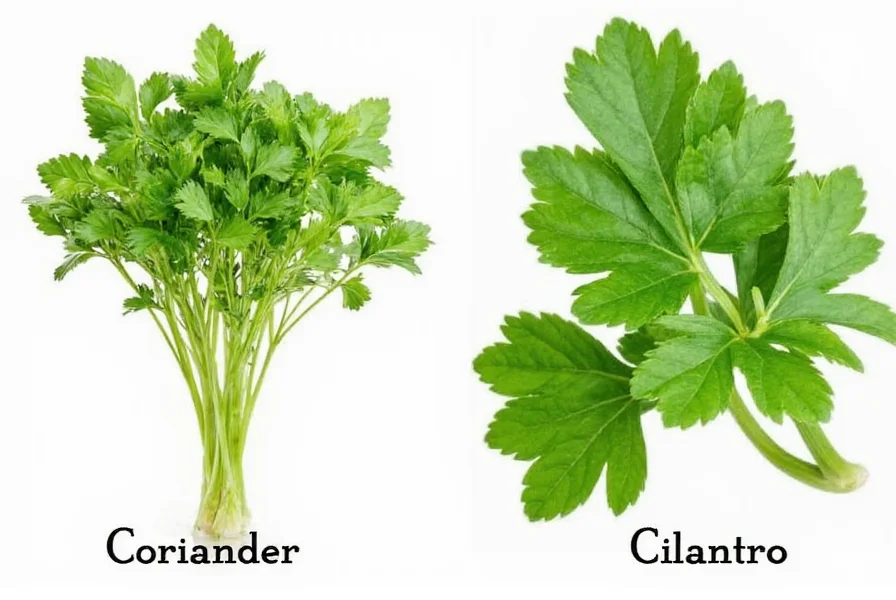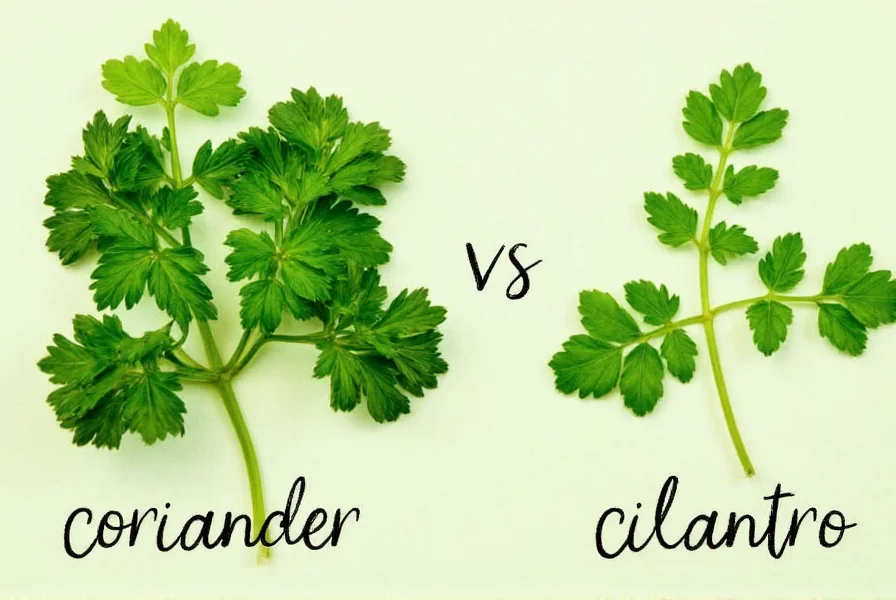Understanding the distinction between coriander and cilantro often causes confusion for home cooks and food enthusiasts worldwide. This common culinary herb goes by different names depending on where you are, creating unnecessary mystery around what is fundamentally the same botanical specimen. Let's clarify this widespread point of confusion with botanical facts and regional usage patterns.
The Botanical Reality of Coriandrum sativum
Scientifically known as Coriandrum sativum, this annual herb belongs to the Apiaceae family, which includes parsley, carrots, and celery. Every part of this versatile plant serves culinary purposes, but the naming conventions vary significantly across English-speaking regions.
The fresh, lacy green leaves and tender stems are what cause the most naming confusion. In the United States and Canada, these fresh parts are called cilantro (from the Spanish word for the plant). Everywhere else in the English-speaking world, including the UK, Australia, India, and South Africa, these same fresh parts are called coriander.
Meanwhile, the dried seeds of this plant are called coriander seeds universally, though in some contexts they may simply be referred to as coriander. This creates the impression that coriander and cilantro are different plants when they're actually different parts of the same plant.
| Term Used | Refers To | Primary Regions |
|---|---|---|
| Cilantro | Fresh leaves and stems | United States, Canada, Latin America |
| Coriander (leaves) | Fresh leaves and stems | UK, Australia, India, South Africa, Europe |
| Coriander seeds | Dried seeds | Worldwide |
Historical Origins of the Naming Confusion
The word 'coriander' entered English from the French 'coriandre,' which traces back to the Greek 'koris' (bug), likely referring to the plant's pungent smell that some compare to bed bugs. Spanish adopted it as 'cilantro,' which Americans later borrowed when Mexican cuisine gained popularity in the United States.
This linguistic divergence explains why American grocery stores list 'cilantro' in the produce section while 'coriander' appears in the spice aisle. Internationally, the same store would label both as 'coriander'—fresh coriander for the leaves and ground coriander or coriander seeds for the dried form.

Culinary Applications Across the Globe
Understanding regional terminology becomes crucial when following international recipes. A British recipe calling for 'coriander' likely means the fresh herb, while an American recipe specifying 'coriander' probably refers to the ground spice.
The fresh leaves (whether called cilantro or coriander) feature prominently in:
- Mexican and Latin American cuisine (salsas, guacamole)
- Indian and Southeast Asian dishes (chutneys, curries)
- Middle Eastern preparations (tabbouleh, zhug)
Meanwhile, coriander seeds appear in:
- Indian curry powders and masalas
- European pickling spice blends
- Middle Eastern dukkah seasoning
- German and Dutch sausages and breads
Common Misconceptions About Coriander and Cilantro
Several myths persist about these terms. One common misconception is that cilantro and coriander taste completely different. In reality, the fresh leaves have a bright, citrusy flavor that some describe as soapy (due to a genetic predisposition), while the seeds offer a warm, nutty, slightly citrus flavor profile.
Another frequent error involves substituting dried coriander leaves for fresh cilantro. Dried coriander herb loses much of its distinctive flavor and shouldn't replace fresh in recipes calling for cilantro/coriander leaves. However, you can substitute ground coriander seeds for whole seeds in most spice applications.
Practical Tips for Cooking With Coriander/Cilantro
When working with this versatile herb, consider these practical guidelines:
- Substitution awareness: If a recipe calls for 'coriander' and you're in America, check whether it means the fresh herb (cilantro) or the spice (coriander seeds)
- Freshness matters: Look for vibrant green leaves without yellowing or wilting for the best flavor in fresh applications
- Seed preparation: Toasting coriander seeds before grinding enhances their aromatic qualities
- Storage techniques: Store fresh cilantro/coriander with stems in water (like flowers) in the refrigerator
- Culinary pairings: The fresh herb complements lime, garlic, and chilies, while the seeds pair well with cumin, turmeric, and fennel
Why the Distinction Matters for Home Cooks
Understanding the coriander-cilantro relationship prevents recipe mishaps and expands your culinary repertoire. When exploring international cuisines, recognizing that these terms refer to the same plant helps navigate foreign cookbooks and menus with confidence.
For gardeners, knowing that cilantro and coriander come from the same plant means you can grow one herb and enjoy both the fresh leaves and seeds. Simply allow some plants to flower and set seed if you want to harvest your own coriander seeds.
Conclusion: Embracing the Terminology
The difference between coriander and cilantro isn't botanical—it's linguistic and regional. By understanding this distinction, you'll navigate recipes from around the world with greater ease and appreciate how language shapes our culinary experiences. Whether you call it cilantro or coriander, this versatile herb remains a kitchen staple across countless global cuisines.
Frequently Asked Questions
Can I substitute coriander seeds for fresh cilantro in recipes?
No, coriander seeds cannot substitute for fresh cilantro (or vice versa) as they have completely different flavor profiles and textures. Coriander seeds offer warm, nutty notes while fresh cilantro provides bright, citrusy flavor. In emergencies, you might use a small amount of ground coriander to complement other fresh herbs, but they're not direct substitutes.
Why do some people think cilantro tastes like soap?
Approximately 20-30% of people possess a genetic variation in olfactory receptor genes that causes them to perceive certain aldehydes in cilantro/coriander leaves as soapy. This genetic predisposition explains why some people love the herb while others find it unpalatable, regardless of whether they call it cilantro or coriander.
Is there any nutritional difference between cilantro and coriander seeds?
Yes, the nutritional profiles differ significantly. Fresh cilantro/coriander leaves are rich in vitamins A, C, and K, while coriander seeds contain higher concentrations of dietary fiber, iron, magnesium, and calcium. Both offer antioxidant properties but in different compositions based on their distinct phytochemical profiles.
Can I grow my own cilantro/coriander at home?
Absolutely. Coriandrum sativum grows easily in containers or garden beds. Plant seeds directly in well-draining soil, as the plant develops a taproot that doesn't transplant well. For continuous harvest, sow new seeds every 2-3 weeks during growing season. Allow some plants to flower and produce seeds if you want to harvest your own coriander seeds.











 浙公网安备
33010002000092号
浙公网安备
33010002000092号 浙B2-20120091-4
浙B2-20120091-4